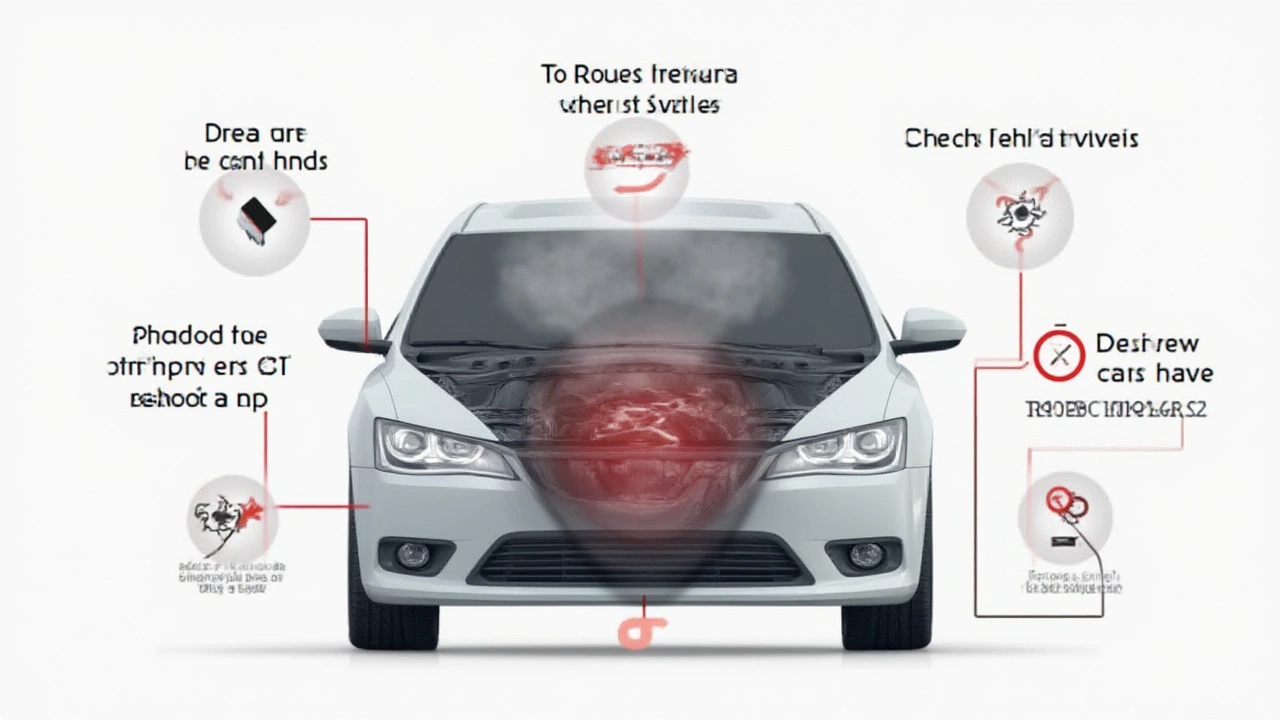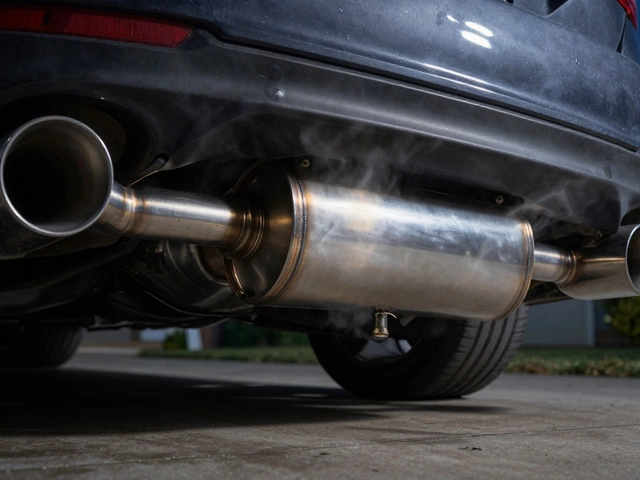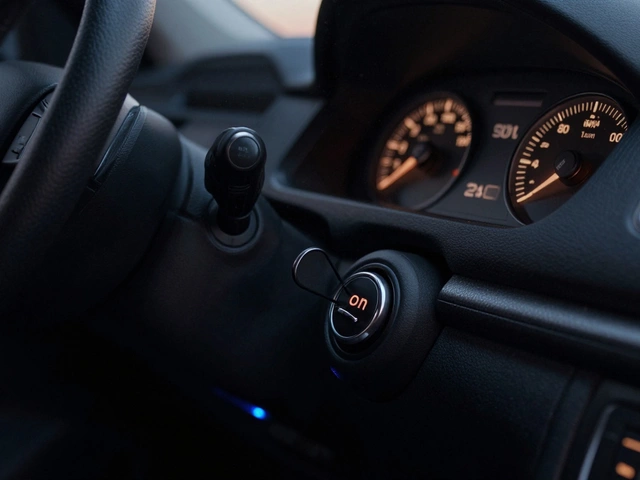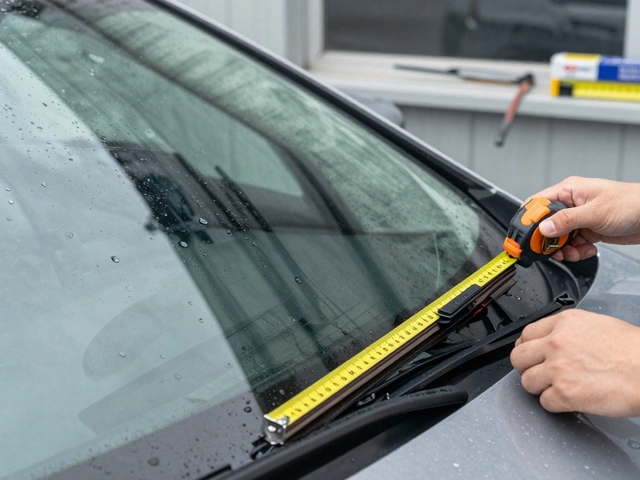Ever had your car cough and stumble like it's got the Monday blues? Imagine this: you’re coasting down the highway, coffee in one hand, favorite song blasting, when suddenly the engine sputters, almost begging for help. That’s often a fuel injector crying out for attention. It’s easily overlooked because it’s a tiny part, but it runs the show when it comes to delivering fuel. Mess that up, and your ride behaves like it pulled an all-nighter. This stuff isn’t just annoying—it can get pricey fast if ignored. If you’re like me, you’d rather not end up stranded with your kid in the backseat and a tow truck as your only rescue plan. So, how can you spot a bad fuel injector before things go sideways?
What Does a Fuel Injector Do and Why Does It Matter?
A fuel injector’s job is pretty basic: squirt just the right amount of fuel into your engine at exactly the right time. Too much fuel? Your engine runs rich, guzzling gas and burning way more money than necessary. Too little? Expect a rough ride, stalling, or embarrassing misfires at red lights. The science behind it is actually pretty impressive. Modern cars rely heavily on computer-controlled systems that call the shots for each injector, making micro-adjustments every split second. Back in the ‘80s, mechanical injectors were all the rage, but now it's all about efficiency, lower emissions, and boosting performance with electronics.
If a fuel injector clogs up, leaks, or fails, you lose that balance. Not only does it mess with the fuel-to-air mixture, but it can also stress out other engine parts. This might sound dramatic, but data from the American Automobile Association (AAA) shows that improper fuel delivery ranks among the top causes of engine breakdowns, next to dead batteries and alternator issues. Neglecting injector health—and I’ve learned this the hard way—doesn’t end well. My old truck left me stranded once when one injector went from “meh” to “nope.”
Why does this matter right now? Because cars are lasting longer than ever, averaging over 12 years on the road according to a 2024 IHS Markit study. That means more chances for injectors to go bad as they clock more miles, especially if you’re not using top-quality fuel or your maintenance schedule slips. This little part is crucial for keeping your engine running clean, strong, and reliable—so yeah, it matters.

The Telltale Signs Your Fuel Injector Is Bad
Let’s get straight to the juicy part: how do you actually know if your fuel injector is causing trouble? Here are the chief warning signs that shouldn’t be brushed off:
- Engine Misfire: This is the classic symptom. When your car shudders, hesitates, or kind of “hiccups,” especially when idling or accelerating, a fuel injector could be the reason. Think of this as your engine trying to dance the salsa with two left feet.
- Poor Fuel Economy: Noticed your gas costs silently climbing? A faulty injector can waste fuel, sending it where it’s not needed or leaking it outright. My kid Jareth once pointed out the fuel gauge dropping faster than usual on my sedan. Turns out, the fuel injector was half the problem.
- Loss of Power: When you stomp the pedal and your car just yawns in response, it might be struggling to get enough fuel because one injector’s slacking off.
- Check Engine Light: This is like your car’s way of saying, “Hey, pay attention!” The onboard computer will often notice injector problems before you do. Running a diagnostic scan can pinpoint which injector’s misbehaving.
- Rough Idle: A smooth hum has turned into a jittery mess? A choppy idle usually means the cylinders aren’t getting fuel the way they should.
- Fuel Odors: Smelling gasoline when you shouldn’t? That hints at a leaky injector letting raw fuel drip into the engine bay or exhaust system. Besides being wasteful, it’s a fire risk.
- Hard Starts: Engines that need extra cranking in the morning might be starved because an injector is clogged or stuck.
- Failed Emissions Test: Can’t pass the smog check? Inefficient fuel atomization can increase unburned hydrocarbons and knock those numbers right past legal limits.
If you’re the curious type, here’s a good stat: According to the most recent Consumer Reports reliability survey, 1 in 15 cars will need injector cleaning or replacement before hitting 150,000 miles. That’s not rare. And if you drive short trips or cheap out on fuel, your odds go up.
Feel like one of these signs is creeping in? Don’t wait. Sometimes it’s a quick cleaning fix, but ignoring a bad injector can fry your engine or catalytic converter down the line—which is not cheap at all.

How to Test and Fix a Bad Fuel Injector
Hands-on time! Most folks (like me) don’t want to throw parts at a problem or spend a Saturday and a small fortune at the shop. Here’s how you can confirm if a fuel injector is the villain:
- Listen Close: With the engine running, pop the hood and use a long screwdriver as a makeshift stethoscope. Touch one end to the injector, put your ear to the other. You should hear a clicking sound (that’s the injector firing). If it’s silent, it might be dead.
- Resistance Check: Grab a multimeter. It sounds fancy, but it’s easy. Unplug the injector’s electrical connector; measure resistance across the injector’s pins. Compare your reading to the spec (usually 10-18 ohms for most cars, but always check your manual). Too high or too low means trouble.
- Fuel Spray Test: This one’s a bit more advanced. Mechanics will pull the injector, connect it to a test rig, and watch if it sprays a fine mist instead of dripping blobs. Sloppy spray equals bad combustion.
- Scan for Trouble Codes: Plug in an OBD-II scanner. You can grab one at any auto parts store for about $30. Trouble codes like P0201 through P0206 (depending which cylinder) point right at injector issues. You can even use your phone if you have a Bluetooth adapter.
If you confirm a bad injector, you’re probably weighing your options: repair, clean, or replace? Cleaning kits are cheap—$10 to $20—and they sometimes solve small clogs. But if your injector is leaking or electrically dead, replacement is the only rescue. Replacement costs vary. Here’s a recent breakdown I put together for common makes:
| Car Type | Single Injector (Parts + Labor) | All Injectors (Parts + Labor) |
|---|---|---|
| Honda Civic | $140 - $220 | $480 - $950 |
| Ford F-150 | $160 - $240 | $600 - $1,200 |
| Toyota Camry | $150 - $210 | $500 - $1,100 |
| Chevrolet Silverado | $180 - $300 | $800 - $1,400 |
| Volkswagen Golf | $175 - $260 | $600 - $1,050 |
If costs rankle, remember: keeping injectors clean with regular fuel system cleaners and avoiding budget gas stations extends their life. High-ethanol blends often leave more deposits—watch out for those if your car isn’t rated for flex-fuels. If you do a lot of city driving and short trips, take your car out for a good highway blast now and then. It really does help burn off the gunk.
One tip I picked up as a dad: Don’t trust every rattle. If your check engine light’s on and you’re seeing the symptoms above, definitely give the injectors a check. But shaky idle from a cold morning or a tank of dodgy gas can look the same. Always rule out the basics—spark plugs, filters, fresh fuel—before blaming the injectors. Use the scan tool data to guide you.
Keeping your car running right saves gas, stops expensive surprises, and keeps you and your family safer on the road. If you get stuck or just want peace of mind, most repair shops can diagnose injectors in under an hour, so you’re not in the dark too long.
In the end, spotting a fuel injector problem early is like catching a cold before it turns into the flu. It’s one of those things most people ignore until smoke’s billowing from the hood—or the car just won’t start. Don’t let it get to that point. Your car—and your wallet—will thank you.








